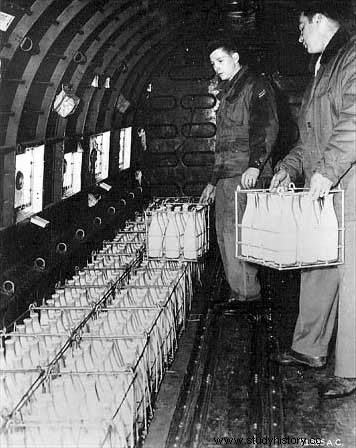- The victory over Nazi Germany was the symbol of the alliance between the USSR and the United Kingdom. The Yalta and Potsdam conferences set up a tripartite and then quadripartite occupation with France and Germany.
- The status of Berlin is emblematic in this respect:although at the heart of the zone occupied by the Red Army, the city reflects the status of the country. It is itself divided into 4 occupation zones. But the Soviets do not consider this situation as normal and definitive since for them, it must be attached to their zone of occupation.
- The decision of the United States in February 1947 to stem the expansion of communism opened the so-called cold war period and, from April 1947, the former allies failed to agree on the final status of Berlin at the conference of Moscow.
- In January 1947, the US and the UK united their occupation zones, and views on the future of Germany diverged. The USSR wants a strongly centralized state, while the USA and the United Kingdom want a federal state. Thus, the London conference in December 1947 was a new failure, and in March 1948, the Soviets withdrew from the Allied Control Council, the quadripartite structure that had controlled Germany since June 1945.
1948 - 1949

Characters
Joseph Stalin
Harry Truman
Procedure
When the French decided to unite their zone with that of the Anglo-Saxons in June 1948, the 3 allies decided to create a common currency:the Deutschmark. This is the way to the creation of a West German state, and the Soviets then organize a total blockade of West Berlin on June 24, 1948.
The United States accepts the showdown by organizing a powerful and very expensive airlift to supply West Berlin. It is a huge investment which Stalin probably did not expect, who refuses the confrontation since he lets the planes land. Berlin becomes a symbol of the "fight for freedom" during the 342 days of the siege. The USA showed its determination to support its allies in Europe and, in May 1949, Stalin yielded. The situation is endorsed by a meeting of foreign ministers of the 5 members of the UN Council in Paris.
Consequences
- As early as the summer of 1948, a commission was tasked with drawing up the constitution of West Germany, and the fundamental law of the Federal Republic of Germany was passed on May 8, 1949. This constitution, conceived as provisional, is still in effect.
- On October 7, 1949, the USSR responded by making its own area a German Democratic Republic, with a centralizing Constitution. The division of Germany is institutionalized.
- The two Germanys will therefore be at the heart of the Cold War, and there is no longer any question of dismembering the former vanquished:
- in the East:we stop dismantling German factories and the GDR is placed at the heart of the CMEA;
- in the West:the desire to restore Germany's economic power indirectly led to the creation of the ECSC in 1951, the premise of the EEC. The FRG is admitted to the Council of Europe, and it is authorized to resume diplomatic relations with all countries from September 1950. If the FRG is to become the showcase of Capitalism, the GDR wishes to illustrate the successes of socialism. But, in June 1953, the acceleration of land collectivization and the raising of production standards led to a general strike leading to a popular revolt on June 17. The demonstrators demand free elections, a state of siege is declared and the repression carried out by the Red Army is bloody.
- Berlin is the scene of ideological clashes between the former victors:each seeks to prove his determination to fight for freedom.
